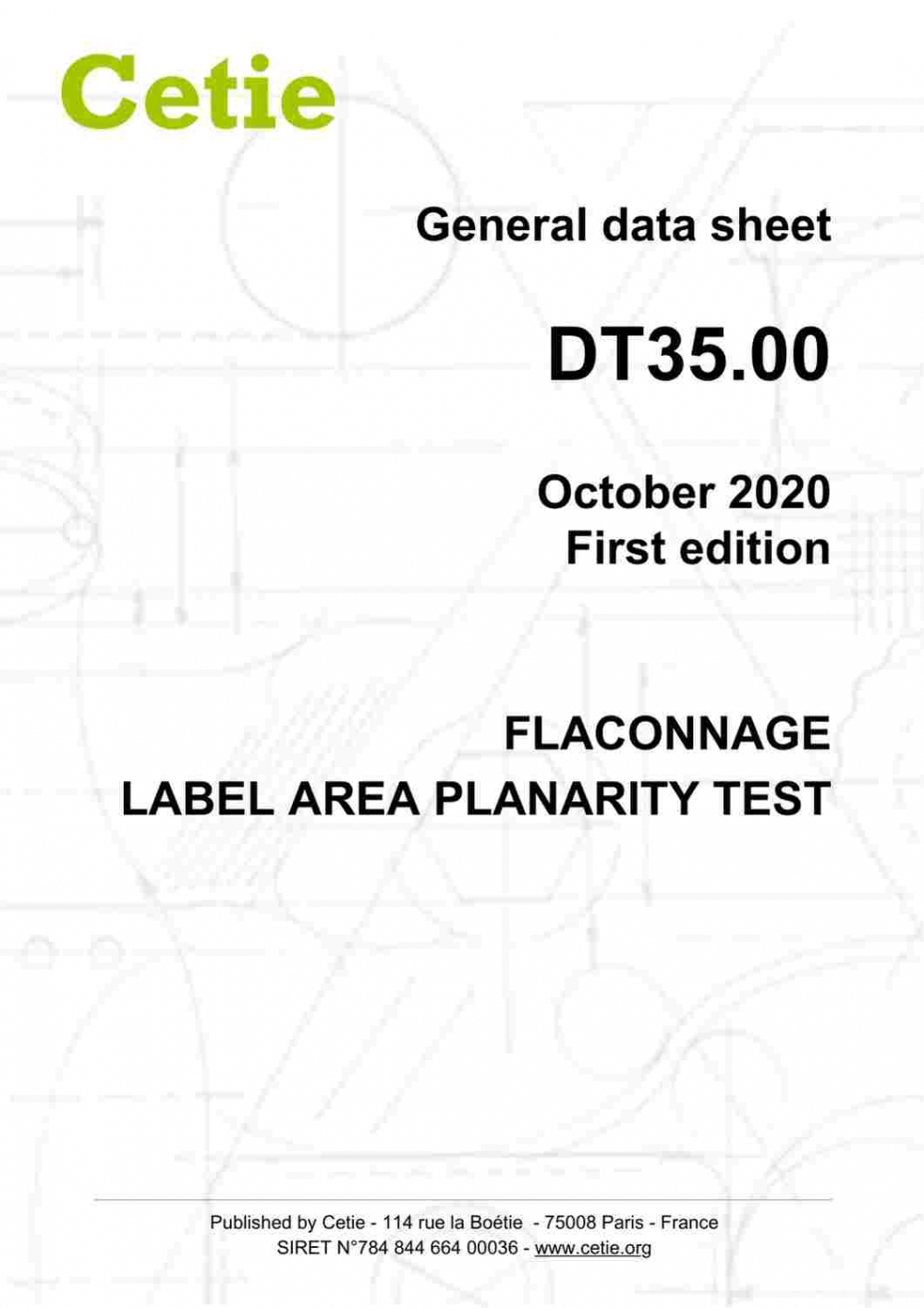DT35.00
First edition
Published on: 15/10/2020
Flaconnage - Label area planarity test
Scope of application
The presence of deformations of the surface of a label area can be the cause of aesthetic defects (presence of bubbles underneath, folds, etc.) when applying the label. This procedure describes a standard testing method for assessing the deformation of a glass surface on which a label is intended to be applied.
Table of contents
1. Scope
2. Definition
3. Test procedure
3.1. Method using a gauge
3.1.1. Equipment
3.1.2. Procedure
3.1.3. Results
3.2. Method A using a comparator
3.2.1. Equipment
3.2.2. Procedure
2. Definition
3. Test procedure
3.1. Method using a gauge
3.1.1. Equipment
3.1.2. Procedure
3.1.3. Results
3.2. Method A using a comparator
3.2.1. Equipment
3.2.2. Procedure
3.2.3. Results
3.3. Method B using a comparator
4. Related documents
4.1. Cetie
5. Document history
3.3. Method B using a comparator
4. Related documents
4.1. Cetie
5. Document history
History
First edition: 10/2020
First edition: 10/2020
Contributors
AGI GLASPAC, ANFEVI, APTAR FRANCE, ARDAGH GLASS PACKAGING SOUTH AFRICA, AROL, BERLIN PACKAGING, BORMIOLI LUIGI, BUNDESVERBAND GLASINDUSTRIE, CHANEL PARFUMS BEAUTÉ, COSTER GROUP, COTY FRANCE S.A. (PARIS), ESTEE LAUDER COMPANIES, GERRESHEIMER BELGIUM, GERRESHEIMER GERMANY, HEINZ GLAS, L'OREAL, PARFUMS CHRISTIAN DIOR, POCHET DU COURVAL, SAVERGLASS, SGD PHARMA, SHISEIDO INTERNATIONAL, SILGAN DISPENSING SYSTEMS, STAZIONE SPERIMENTALE DEL VETRO, STAZIONE SPERIMENTALE DEL VETRO, STOELZLE MASNIERES PARFUMERIE, STOELZLE-OBERGLAS, VERESCENCE FRANCE
Document under responsibility of working group:
Flaconnage geometry
WG chair: Lorenzo PASQUALI - BORMIOLI LUIGI S.p.A.
This joint group aims to produce dedicated documentation on glass flacons for the cosmetics, perfume, and pharmacy sectors:
- Cetie 'GME'* neck finishes data sheets concerning glass crimping neck finishes (FEA), screw neck finishes, neck finishes for pumps and snap-on neck finishes, etc.
- All data sheets of the DT15 series, identifying tolerances and standard test methods applicable to molded glass flacons;
- Data sheets concerning critical visual defects of flacons, neck finishes nomenclature, etc.
- Guide of crimping recommendations.
*Initiated by the glass industry in the 1960s, the acronym 'GME' stands for 'Glass Manufacturing Experimental'. The idea was that Cetie, as an unofficial standards body, would only publish 'experimental' data sheets, before submitting these to the official standards bodies. At the same time, in the USA, the acronym 'GME' was also used. As the original meaning was lost over time, this nomenclature for Cetie's glass finishes documents has been, later on, applied to the PET finish data sheets.
